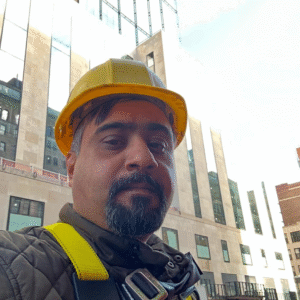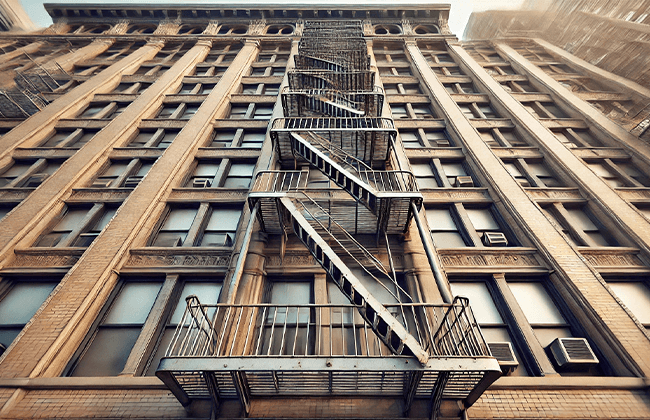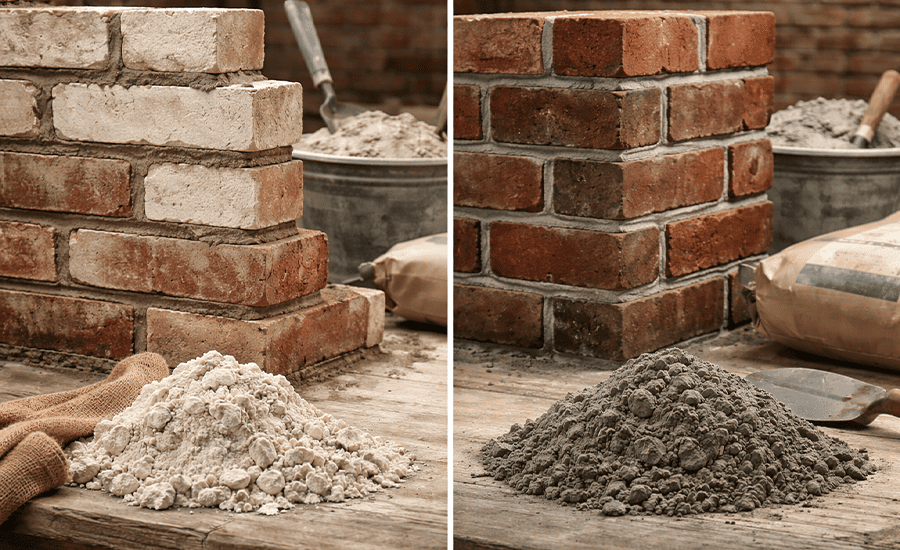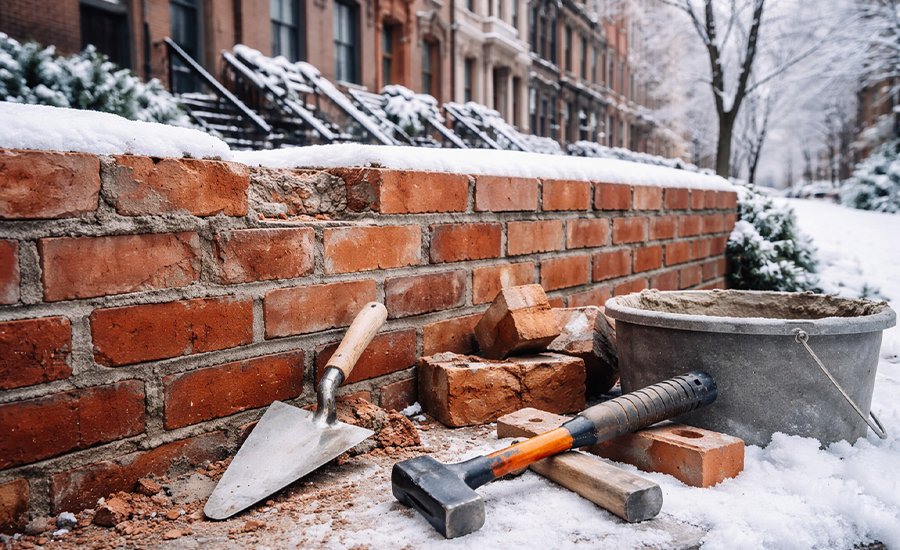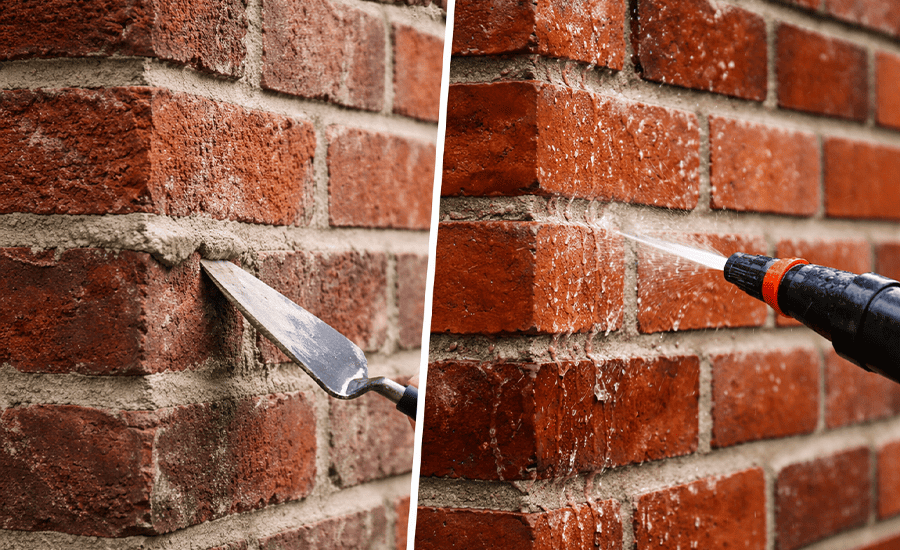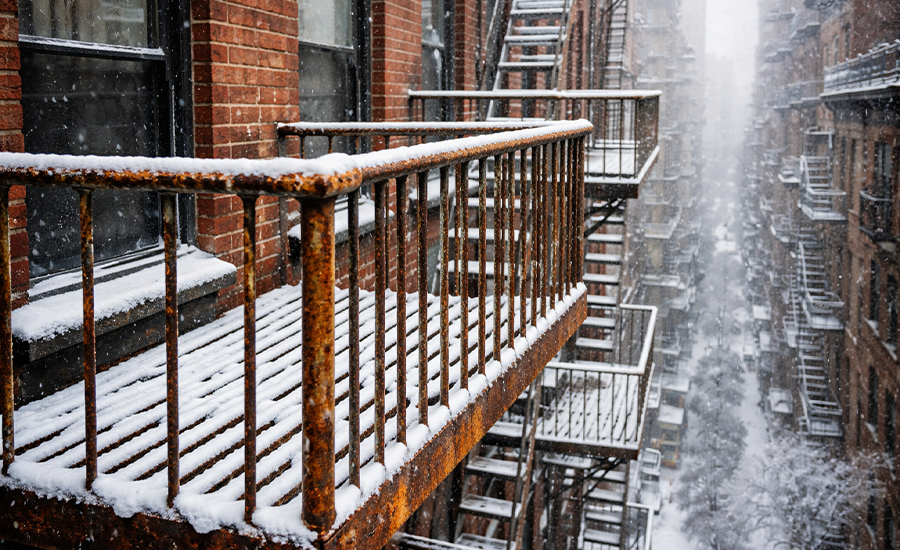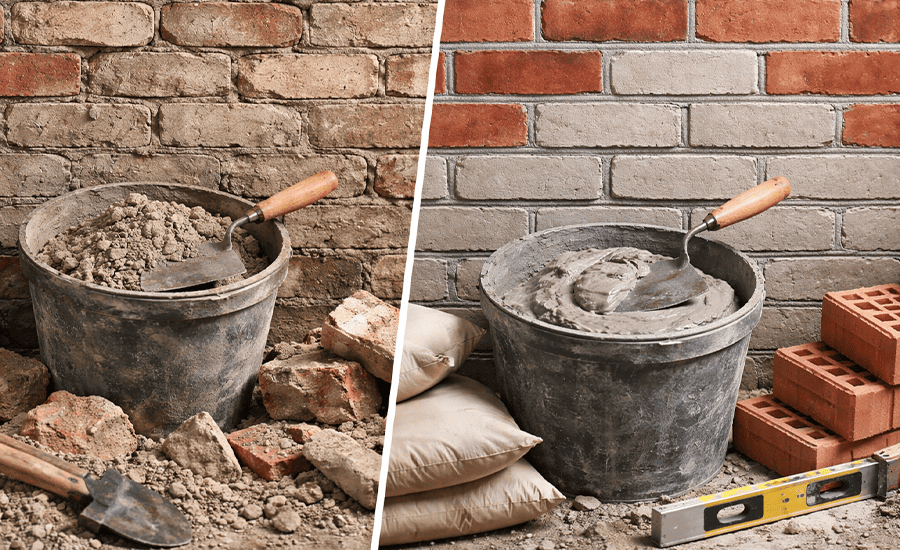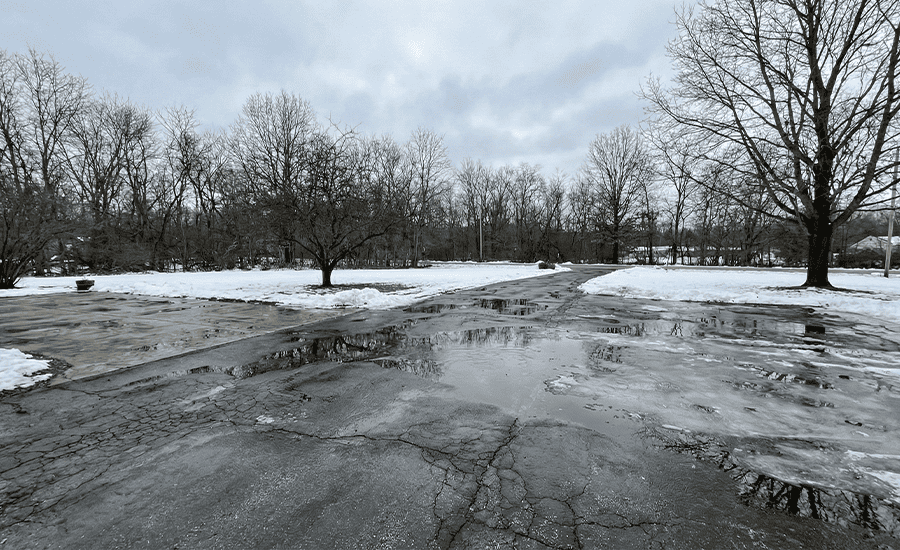Fire escapes are critical for building safety, providing a direct means of evacuation in the event of an emergency such as a fire. Though often associated with older buildings, maintaining a fire escape in good condition is essential regardless of the structure’s age. The longevity of a fire escape depends on factors like the materials used, how often it is inspected, its exposure to environmental elements, and the frequency of maintenance.
Lifespan of a Fire Escape: How Long Can It Last?
On average, a well-maintained fire escape can last 50 to 75 years, but the actual lifespan varies based on a range of factors. The metal used in construction—typically steel or wrought iron—is durable but requires regular upkeep to prevent rust and structural degradation. Neglect or poor maintenance could lead to significant safety risks and force early replacement.
For example:
- Steel fire escapes, due to their strong structure, often have a longer life expectancy, but they need protective coatings like paint or galvanization to prevent rust.
- Wrought iron fire escapes may develop rust more quickly in humid environments but can also last for decades with regular care and rust treatment.
Factors That Impact Fire Escape Longevity
Fire escapes can last for several decades if maintained correctly, but multiple factors influence their overall lifespan.
Material Quality
The type of metal used in the construction of the fire escape plays a major role in its lifespan:
- Steel is one of the most common materials because of its strength and durability. If regularly treated with anti-rust coatings, steel fire escapes can last 50+ years. However, when exposed to moisture, especially in coastal areas, they can rust quickly if not maintained properly.
- Wrought iron, while highly fire-resistant, is more susceptible to rusting, especially in areas with high humidity. Without regular treatment, its lifespan may decrease, potentially needing major repairs or replacement in 20 to 40 years.
Environmental Exposure
The climate and environment where the fire escape is installed significantly impact its longevity. In regions with frequent rain, snow, or saltwater exposure, fire escapes are more likely to corrode:
- Coastal areas: High salt content in the air speeds up the rusting process. Fire escapes in these regions may require more frequent inspections and maintenance to counteract the corrosion.
- Urban environments: Exposure to pollution, acid rain, and debris can also accelerate rusting and metal fatigue.
Frequency of Maintenance
Regular inspections and maintenance are key to extending the lifespan of a fire escape. Some cities, like New York and Boston, have laws mandating that fire escapes be inspected every five years by a licensed professional. Failing to meet these requirements can lead to fines, but more importantly, it risks the fire escape becoming unusable or unsafe.
Proper maintenance includes:
- Rust removal and repainting: Regularly repainting with a rust-resistant coating can significantly slow down corrosion. Some experts suggest a fresh coat of paint every 3 to 5 years, depending on environmental exposure.
- Replacing worn-out components: Over time, bolts, stairs, and railings can loosen or degrade. Replacing them promptly ensures the fire escape remains structurally sound and safe for use.
- Galvanization: This process involves coating steel with a layer of zinc to protect it from corrosion. Fire escapes that are galvanized often last significantly longer than those without protective coatings.
Key Signs of Deterioration
Even with the best maintenance practices, fire escapes eventually show signs of wear and may need repair or replacement. Common indicators that a fire escape may be nearing the end of its lifespan include:
- Extensive Rusting: While minor surface rust is expected, deep rust that penetrates the metal, particularly around joints and weight-bearing components, is a serious issue.
- Loose Bolts or Rails: Over time, the connections between different parts of the fire escape, such as the stairs and railings, can loosen. If left unchecked, this can lead to serious safety hazards.
- Warping or Bending: Any visible warping or bending of the structure indicates that the metal is weakening, which could make the fire escape unsafe to use in an emergency.
If these issues are not addressed promptly, the fire escape could fail during an emergency, putting lives at risk. In many cases, it’s more cost-effective—and safer—to replace the fire escape rather than repeatedly repairing it.
Legal and Safety Requirements
Fire escape inspections are not just a best practice—they are often a legal requirement. In many jurisdictions, fire escapes must meet specific safety codes and undergo regular inspections. In cities like New York, Local Law 11 requires property owners to maintain the structural integrity of their buildings, which includes fire escapes. Failure to comply with these regulations can lead to significant penalties.
Building codes typically specify:
- Mandatory inspections every few years by a licensed engineer or inspector.
- Certification that the fire escape is safe and functional.
- Immediate repairs for any discovered issues, including rust, loose bolts, or structural damage.
Fire Escape Replacement: When is it Necessary?

Despite regular maintenance, there will come a time when a fire escape may need to be replaced. Indicators for replacement include:
- Extensive corrosion: If more than 50% of the structure is affected by rust, replacement is often the best option.
- Structural instability: If the fire escape shows signs of severe weakening, such as bending or sagging, replacement may be necessary to ensure safety.
- Non-compliance with modern codes: Some older fire escapes no longer meet current safety standards. Updating to a newer, more code-compliant design can provide greater peace of mind.
When replacing a fire escape, property owners should consider using more modern materials, such as galvanized steel or aluminum, which offer better resistance to corrosion and have longer lifespans than traditional iron.
Extending Fire Escape Lifespan: Best Practices
To maximize the life of a fire escape and ensure it remains functional:
- Regular Inspections: Schedule professional inspections every 3 to 5 years to detect issues early and avoid costly repairs.
- Preventive Maintenance: Apply rust-resistant coatings and address minor issues before they become serious. Consider galvanization for steel fire escapes in regions prone to moisture.
- Routine Cleaning: Remove debris, leaves, and other material that can trap moisture and accelerate rusting.
- Proper Usage: Fire escapes are meant for emergencies only, not as regular staircases. Avoid overuse or subjecting the structure to heavy loads.
Conclusion
Fire escapes can last 50 to 75 years, but their longevity depends on several factors, including the quality of the materials, environmental exposure, and how well they are maintained. With proper care, regular inspections, and adherence to safety codes, fire escapes can serve as reliable emergency exits for decades. Property owners should prioritize maintaining these critical safety features to ensure the well-being of building occupants and comply with legal regulations.
FAQs
Q: What is the typical lifespan of a fire escape?
A: Fire escapes can last between 50 to 75 years with regular maintenance and proper care. The material and environment largely influence their durability.
Q: How often should fire escapes be inspected?
A: Most fire escapes should be inspected every 3 to 5 years to check for signs of rust, corrosion, or structural instability. In some cities, more frequent inspections are legally required.
Q: What are the most common causes of fire escape deterioration?
A: The main causes include rusting, corrosion from environmental exposure, and loose bolts or rails due to metal fatigue. In coastal areas, salt in the air can accelerate these processes.
Q: Can a fire escape be repaired, or should it be replaced entirely?
A: Minor issues like surface rust or loose bolts can usually be repaired. However, if over 50% of the structure is compromised by rust or the metal is warped, a complete replacement may be necessary.
Q: What materials are best for fire escapes in coastal areas?
A: Galvanized steel or aluminum are preferred in coastal regions due to their better resistance to rust and corrosion compared to iron or untreated steel.

